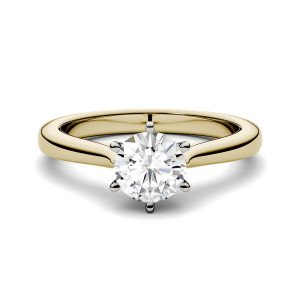Following my last article which gives a general guidance on how to select diamonds for bridal purposes, say wedding rings or engagement rings, this article will guide you through non-bridal occasions lile business resale or investment. Below will give a framework of evaluating diamonds for such purposes:
Cut quality: The diamonds should be cut well enough to display good brilliance and sparkle. Symmetry is not as important for diamonds in bracelets, brooches and necklaces as it is for the featured diamond of a bridal ring.
Color, carat weight, cutting style & shape: Same advice as for wedding and engagement rings.
Clarity: Avoid 13 clarity diamonds. 12 diamonds are acceptable if they have life and sparkle. In fact certain 12 diamonds look better when mounted than some with a grade of 11 or Sl3 (a grade seen on some lab reports, which is between 11 and Sl2). A piece featuring a high quality gemstone should be accented with diamonds of good quality.
Transparency: Buy jewelry with transparent diamonds. Two exceptions are jewelry pieces with black diamonds and pieces with patterns and designs requiring translucent white diamonds. A lot of bargain-priced jewelry contains diamonds with inadequate transparency, which decreases their brilliance. When you're aware of this, it's easy to spot these diamonds in a showcase with your naked eye. Cloudy diamonds are not a good buy.
Treatment status: Treated diamonds can be an affordable option to buying natural diamonds.
They can allow you to get a big look or unusual colors at a low price. If there's not a significant price difference between the enhanced or unenhanced stones, you're better off buying untreated diamonds. A few jewelers have charged customers a premium for heat and pressure treated diamonds. This is a real rip-off.
If you're not in the gem trade, you should buy a diamond to wear rather than to place in a safe deposit box. If you try to resell it to a dealer, they'll usually expect to buy it at less than wholesale price. In addition, it's hard to find buyers when you're not in the diamond business. Nevertheless, it's normal for you to be interested in the resale potential of a diamond if you pay several thousand dollars for it. Here are some standards for investment diamonds.
Cut quality: Good symmetry . The standards for fancy color diamonds are more eruent guidelines on identifying top quality cuts because they're cut to maximize color.
Color: D-F color grades are customary for Dinvestment grade diamonds, but G-J colors are usually easier to sell because of their lower price. Fancy red, blue, pink and green diamonds can all be considfered as an investment. Their high prices, however, limit the number of prospective buyers.
Carat weight: One carat or larger is the norm for investment diamonds, with the exception of rare fancy color diamonds, which may wigh less. Any size diamond is saleable.
Clarity: Flawless to VVS grades are typically recommended for investment grade diamonds. VS and SI grades, however, are often easier to sell because of their lower price. Flawless and internally flawless diamonds are best left in a safe deposit box. If they're mounted in a ring, they could get scratched and have their clarity grade and value lowered.
Clarity is not as important with fancy colour diamonds. In fact, the diamond that holds the record for the highest per carat ($926,000) had large, deep inclusions giving it an imperfect clarity. It was a 0.95 carat diamond with a fancy purplish red color.
Cutting styler & Shape: Round brilliant is the most saleable except in big sizes and fancy colors.
Transparency: High transparency is essential.
Treatment status: Buy only untreated diamonds if you plan to resell them.












































